Getting To Know More About Green Energy Solutions
Green energy solutions are becoming increasingly popular as more and more people realize their potential to reduce our reliance on non-renewable resources. From solar panels to wind turbines, green energy technology is quickly revolutionizing the way we generate power. With this article, we’ll explore some of the innovative green energy solutions available today, and discuss how they can benefit both individuals and businesses alike.
By implementing sustainable energy sources into our everyday lives, we can not only save money but also help protect our environment for future generations. We’ll look at what types of green energy technologies are out there, as well as ways to make them affordable and accessible for everyone. So if you’re curious about what green energy has to offer – read on!
Solar Energy Solutions
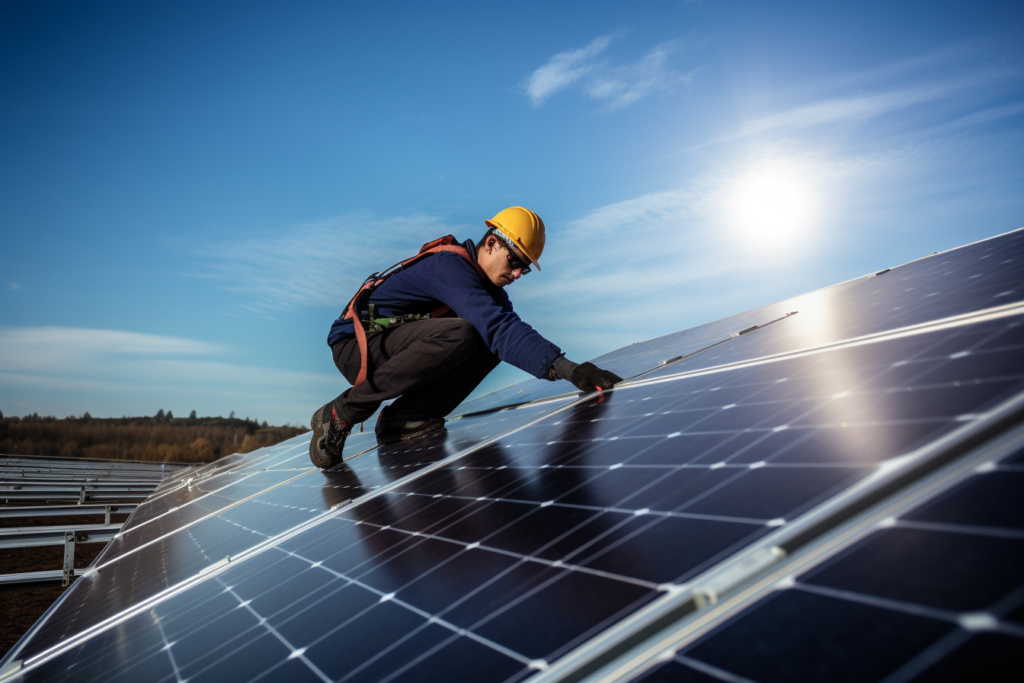
This type of energy solutions are becoming increasingly popular, and one of the best ways to take advantage of this is to install solar panels. Solar panel installation can be a great way to reduce your energy costs and contribute to a greener future.
Additionally, solar battery storage solutions can help you maximize your solar energy usage and reduce your reliance on traditional energy sources. With all of these options, there’s no better time to make the switch to solar energy solutions!
Solar Panel Installation
Are you looking for green home energy solutions? Solar panel installation is one of the best ways to get started. It’s a great way to take advantage of renewable, sustainable energy and reduce your carbon footprint. Installing solar panels can provide many benefits, from lowering your electricity bills to helping protect the environment. Not only that, but with the right incentives in place it can make financial sense too!
When it comes to solar panel installation there are a few things to consider. Firstly, you’ll need to determine how much power you want to generate and what kind of system will be most cost-effective. You’ll also need to decide whether or not you’d like to install panels on your roof or use other methods such as ground mounting systems. Finally, with any large project like this it’s always important to do research and select a reputable installer who has experience working with solar technology.
Once everything is in place, you can start enjoying all the wonderful advantages that come with having solar panels installed at home – lower utility bills, cleaner air, an increased property value and more! And don’t forget about bragging rights – nothing says “I care about our planet” quite like going green with your own personal solar energy solutions setup.
Embrace the revolutionary DIY Home Energy System and enjoy the satisfaction of slashing your electric bill by up to 75% or more in as little as 30 days! Its simplicity and accessibility make achieving energy independence effortless, ensuring you never miss out on the chance to save money and provide a secure environment for your loved ones.
👇 Please Watch to See How It Works! 👇
Solar Battery Storage
Now that you’ve taken the plunge and installed solar panels, how do you store the energy they generate? Solar battery storage is a great way to make sure your home has access to green hybrid energy solutions even when the sun isn’t out. With batteries in place, your solar system can continue working during periods of peak demand or on cloudy days when there’s not enough sunlight for power production. This also helps reduce any strain on local utility grids while ensuring that your home stays powered up with clean, renewable energy.
The good news is that installing a solar plus storage setup doesn’t have to be difficult – many companies offer turnkey packages so you don’t have to worry about sourcing components yourself. Plus, depending on where you live there may be financial incentives available which could help offset some of the initial cost.
All these benefits combined means it makes sense for anyone looking for reliable green energy solutions to look into incorporating solar battery storage into their system. With all this in mind, if you’re ready to take advantage of even more savings from going green then investing in solar battery storage is definitely worth considering!
Wind Energy Solutions
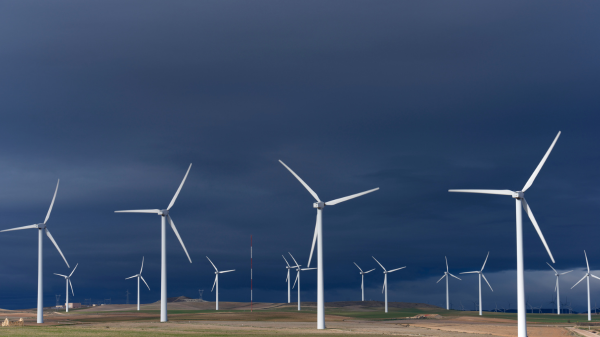
Wind turbines are a great way to create clean, renewable energy with minimal environmental impact. Constructing them requires careful planning and consideration of the local environment, so they can be built safely and efficiently.
Once they’re up and running, their efficiency can be maximized through regular maintenance, making sure they’re always operating at peak performance. With the right know-how and technology, wind energy can be a powerful and reliable green energy solution.
Wind Turbine Construction
Wind turbines are an essential component of green energy solutions, and their construction is a complex process. From selecting the right location to ensuring that proper regulations are met, constructing wind turbines requires careful planning and attention to detail. In addition, turbine manufacturers must factor in any potential environmental risks associated with building such a large structure.
The construction of a single wind turbine begins with conducting surveys to determine its ideal location. This includes assessing the site for nearby obstacles – like buildings or trees – which could impede airflow and affect efficiency levels.
Once all permits have been obtained from relevant authorities, crews can begin excavation works and lay down foundations for the tower’s base. When it comes to assembling the main components – blades, nacelle, hub and generator – manufacturers rely on cranes to lift each piece into place before carefully affixing them together.
Once completed, technicians will then run safety checks and calibrate the turbine before connecting it to local power grids so that electricity generated by the wind can be distributed accordingly. With these steps taken care of, new turbines now stand ready as part of our growing network of renewable sources!
Wind Energy Efficiency
Once a wind turbine is constructed, manufacturers must ensure that it operates at an optimal level of efficiency. This means making sure the blades are properly aligned and balanced to capture as much energy from the passing winds as possible.
It also involves regularly inspecting the nacelle for any signs of wear or damage, which can reduce power output if left unchecked. Additionally, software updates may need to be applied on occasion in order to keep up with changing environmental conditions.
To maximize efficiency levels further, some turbines have been equipped with advanced features such as pitch control systems. These allow operators to adjust blade angles according to wind speed and direction so that more power can be generated even during fluctuating weather patterns.
Other technologies like yaw controllers take into account gusts of air which otherwise would not spin the blades, enabling them to harness additional sources of renewable energy for our modern-day needs. Ultimately these advancements help us tap into greater amounts of clean power while minimizing our carbon footprints – a win-win situation that benefits both people and planet alike!
Geothermal Energy Solutions

Geothermal heat pumps are an efficient way to reduce energy costs and help the environment, as they use the energy stored in the ground to produce heat.
The energy plants of geothermal are a great option for providing large scale renewable energy, as they use the Earth’s heat to create electricity.
They can be a great long-term investment, and can really help reduce emissions.
Let’s look at how these two geothermal energy solutions can help us create a greener future!
Geothermal Heat Pumps
Welcome to the world of geothermal energy solutions! Let’s take a look at one particularly exciting option: geothermal heat pumps.
Geothermal heat pumps are an efficient and cost-effective way to provide your home or business with heating, cooling, and hot water.
By using the earth as a source of energy instead of burning fossil fuels, you can reduce your carbon footprint while also saving on utility costs.
Plus, they’re incredibly reliable – geothermal heat pump systems last up to 25 years or more with minimal maintenance requirements.
Geothermal heat pumps work by transferring thermal energy from underground pipes into buildings through air exchangers via a refrigerant system.
The temperature below ground tends to stay relatively constant throughout the year, so this energy is available all year round.
This means that even during cold winter months when it’s too chilly for traditional HVAC systems, you’ll still get consistent performance from your geothermal system.
And because there are no outdoor units like other types of HVAC systems have, there is no noise pollution either – just quiet efficiency!
So if you’re looking for an eco-friendly way to keep your home comfortable year-round without breaking the bank or compromising on quality, geothermal heat pumps could be exactly what you need.
It might seem daunting at first but once installed, you can sit back and enjoy the benefits without worrying about any maintenance headaches down the line – now that’s something worth getting excited about!
Geothermal Energy Plants
Moving on from geothermal heat pumps, let’s explore a larger scale application of geothermal energy: plants.
Geothermal energy plants are large-scale power plants that use the earth’s natural heat to generate electricity. They can be used to provide clean and renewable energy for homes and businesses while reducing dependence on fossil fuels. Plus, they’re incredibly reliable – these types of plants can last up to 50 years or more with minimal maintenance requirements!
These types of geothermal power plants make use of reservoirs located deep underground that contain naturally heated water or steam which is then pumped up and converted into electricity using turbines. This process produces virtually no air pollution and has little impact on the environment, making it an attractive option for those looking for sustainable solutions.
Furthermore, since this type of plant doesn’t require any fuel other than what is already provided by nature, operational costs tend to be much lower compared to traditional forms of energy production such as coal or nuclear power.
Geothermal energy plants offer a powerful solution to our growing demand for clean, renewable sources of energy. With their ability to produce low cost electricity without harming the planet, they could help us achieve our environmental goals in a way that conventional methods simply cannot match.
Hydropower Energy Solutions

Hydropower offers many benefits, including clean and renewable energy production, no greenhouse gas emissions, and cost-effectiveness.
Turbine technologies have advanced significantly in recent years, allowing us to create more efficient and cost-effective systems.
Dam management is an important part of hydropower, as it allows us to regulate water flows, preventing flooding and other environmental hazards.
We must ensure that dams are managed responsibly and sustainably in order to maximize the potential of hydropower.
Through the use of new turbine technologies and careful dam management, we can use hydropower to create a cleaner, greener future.
Hydropower is a great option for renewable energy solutions – let’s explore how we can make the most of it!
Benefits of Hydropower
Hydropower energy solutions are gaining more and more attention as a sustainable, renewable source of green energy. Hydropower is produced by using the natural flow of water to generate electricity through turbines, making it one of the most environmentally friendly sources available.
But what are some other benefits that this type of power brings?
One major benefit that hydropower provides is its ability to act as an efficient way to store clean energy. Most types of renewable energy sources cannot be reliably stored when not in use, but with hydroelectricity, excess electricity can be captured during times of high production and then released back into the grid when demand for electricity increases again. This allows for consistent delivery of clean power at all hours without any emissions being created in the process.
Another great advantage supported by many environmental groups is that hydropower plants reduce our dependence on fossil fuels which contribute significantly to global warming. With no burning involved and minimal land disruption needed compared to traditional methods, these systems offer a cleaner alternative than coal or gas-fired plants while still providing large amounts of energy.
All while helping preserve our environment!
Turbine Technologies
Turbine technologies are an important part of hydropower energy solutions. Without turbines, hydropower wouldn’t be able to generate electricity in the first place!
Turbines come in many shapes and sizes, but they all work on the same principle – using kinetic energy from a flowing body of water to turn blades that spin generators and create electricity.
This process is much more efficient than burning fossil fuels or relying on wind power alone.
In addition, modern turbine technologies have become increasingly advanced over time. With advances like variable speed drives and adjustable blade angles, we can now harness even more power from these systems while also reducing noise pollution levels.
The technology has also been used to develop tidal turbines which use ocean currents instead of river flow for generation.
Thanks to these advancements, hydroelectric dams are becoming a viable source of clean energy for many parts of the world – providing us with reliable access to green energy without any emissions being created in the process.
Dam Management
Once the turbine systems are in place, proper dam management is essential for ensuring efficient and sustainable energy production. This means making sure that water levels are consistently monitored and controlled to maximize output while minimizing environmental impact. Additionally, dams must be regularly maintained so they can continue to produce power safely over time.
Advanced monitoring technologies like remote sensing devices make it easier than ever before to keep a close eye on these important structures. By gathering real-time data about flow rates, sedimentation levels, and other factors, operators can adjust operations as needed to ensure maximum efficiency with minimal disruption to local ecosystems.
Overall, hydropower technology has come a long way in recent years – enabling us to capture clean energy from rivers and oceans without sacrificing too much of our natural environment in return. With continued advances in dam management practices, we’ll soon be able to get even more out of this renewable resource!
Bioenergy Solutions
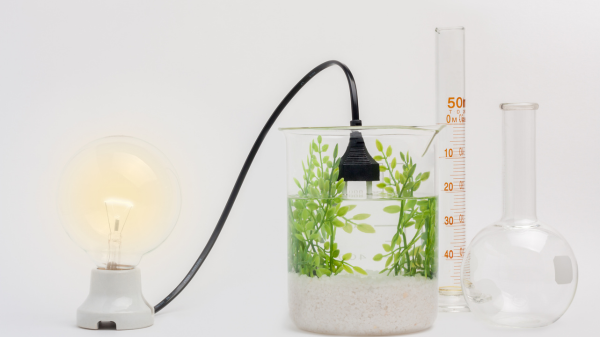
Biofuel production and biomass power plants are two of the most important green energy solutions. They both offer renewable energy sources with little to no pollution.
Biofuel production utilizes organic materials, like corn and soybeans, to create fuel for transportation.
Biomass power plants, on the other hand, burn organic materials, like wood chips and sawdust, to create electricity.
Together, these solutions can help reduce our dependence on fossil fuels and ensure a greener future.
Biofuel Production
Biofuel production is one of the most promising green energy solutions on the market today. It’s a sustainable way to generate fuel without having to rely on fossil fuels and it can be used in place of gasoline for cars, trucks, buses, aircrafts, ships and more.
Moreover, biofuels are made from renewable sources such as vegetable oil or animal fat which makes them environmentally friendly.
Another great thing about biofuels is that they produce fewer carbon emissions compared to traditional fossil fuels like diesel and petrol – this means less air pollution!
Furthermore, there are several different types of biofuel available depending on what type of engine you have. For example, biodiesel can be used with diesel engines while biogasoline works best with gas engines.
By investing in biofuel production we can reduce our reliance on non-renewable resources and help create a greener future for generations to come. Biofuels offer an efficient alternative to traditional petroleum-based fuels and will help us move towards a cleaner form of transportation for years to come.
Biomass Power Plants
Biofuels are one way of generating green energy, but another option is to use biomass power plants. These types of plants utilize organic matter such as wood chips, agricultural waste and other materials to generate electricity. This method offers a renewable source of energy that can be used in place of traditional fossil fuels. It also has the added benefit of reducing carbon emissions from burning fossil fuels.
Biomass power plants offer an efficient solution for meeting our growing demand for sustainable energy sources. Biomass power generation is becoming more popular due to its cost-effectiveness and potential for scalability. In addition, it can provide reliable baseload electricity without being dependent on weather or seasonal fluctuations like some renewable options such as solar or wind power.
Also, unlike biofuels which require specialized machinery to produce them, biomass power plants do not need any extra equipment apart from what’s necessary for electricity production itself – making them simpler and cheaper to operate. Overall, biomass power plants are an attractive choice when looking at ways to reduce our reliance on non-renewable resources while still providing clean energy solutions.
With their cost-effectiveness and ability to scale up quickly they have the potential to become even more widespread in the near future – making them a viable option for helping us move towards a greener future with less air pollution and fewer greenhouse gas emissions.
Wave And Tidal Energy Solutions

Wave energy technologies are an increasingly popular green energy solution, with a range of innovative methods being developed to harness the power of the ocean’s waves.
Tidal energy sources, meanwhile, tap into the predictable and powerful movements of the tides.
Ocean energy systems are a combination of both, taking advantage of both the waves and the tides to generate clean energy.
The potential of wave and tidal energy solutions is huge, with a vast untapped resource available to be used.
Utilising these renewable energy sources can help us reduce our reliance on fossil fuels and move towards a more sustainable energy future.
With continued research and development, wave and tidal energy solutions could become a key part of the global energy mix.
Wave Energy Technologies
Wave energy technology is a rapidly growing area of green energy solutions. It’s harnessing the power of ocean waves to create renewable electricity and reduce our reliance on fossil fuels. Wave energy works by capturing the kinetic movement of an ocean wave and converting it into usable electricity that can then be stored or sent back into the grid.
This type of technology is relatively new, but many companies are investing in its development as they recognize its potential as an affordable, clean source of energy. Unlike other forms of renewable energy such as solar or wind, which require large-scale investments for installation and maintenance, wave energy devices are small and simple enough to be installed without major disruption.
As research continues to develop more efficient systems for harvesting wave energy, costs will continue to decrease making this form of alternative energy more accessible to people all over the world. The future looks bright for wave energy technologies with increased investment from governments and private organizations supporting their growth and development.
Advances in technology have enabled us to make great strides towards reducing our dependence on non-renewable sources and creating a cleaner environment through sustainable practices. With continued dedication, these solutions could soon become part of our everyday lives – paving the way towards a greener future.
Tidal Energy Sources
Now let’s turn our attention to another type of wave and tidal energy solution: tidal energy sources.
Tidal power plants use the natural ebb and flow of tides in coastal areas to generate electricity, providing a reliable source of clean energy with minimal disruption to local wildlife.
Unlike other renewable solutions such as solar or wind, which require large-scale investments for installation and maintenance, installing a tidal turbine requires much less effort and cost.
Additionally, since the ocean’s tides are consistent and predictable, we can count on these turbines generating consistent levels of electricity at all times – making them an extremely valuable resource for meeting our energy needs.
With more investment from both governments and private organizations, this technology has great potential to become one of our go-to green solutions in the near future.
It is clear that wave and tidal energy technologies will continue to play an important role in helping us achieve our goal of transitioning towards sustainable practices that benefit both people and planet alike.
Ocean Energy Systems
Now, let’s look at another great solution in the wave and tidal energy space: ocean energy systems.
This technology harnesses the power of waves to generate electricity, providing a valuable renewable resource that is both reliable and accessible.
As opposed to other sources like solar or wind, ocean energy systems are able to capture an immense amount of potential energy from our oceans – making them extremely viable for meeting long-term sustainability goals.
Moreover, these systems can be installed relatively easily with minimal disruption to local wildlife populations or habitats.
With all this in mind, it’s clear why investing in ocean energy solutions should be seen as one of the best ways we can move towards establishing green practices that benefit people and planet alike.
Hydroelectric Energy Solutions
Hydropower offers many benefits, such as increased access to electricity and reduced reliance on fossil fuels.
Hydropower dams are a great way to generate clean energy, but come with certain environmental considerations.
Renewable energy solutions like hydroelectricity provide a reliable, cost-effective source of energy. They also reduce emissions, helping us to meet our climate goals.
Hydroelectric solutions provide clean energy for millions of people, making them a valuable part of our energy mix.
It’s important to consider the impacts of hydroelectric dams and other renewable energy solutions on the environment and community.
Hydropower Benefits
Hydropower is one of the most reliable renewable energy sources available. Not only does it provide clean, sustainable electricity to homes and businesses, but it also offers a host of other benefits that make it an attractive option for green energy solutions.
From reducing dependence on fossil fuels to providing recreational opportunities, hydropower can be an effective part of any green energy solution.
One advantage of using hydropower as a source of renewable energy is its reliability; large-scale hydroelectric facilities are able to produce steady amounts of power with very little fluctuation. This makes them ideal for use in regions where grid stability is a concern or when combined with intermittent sources like wind or solar. Furthermore, since water isn’t depleted by producing hydropower, it’s possible to generate more electricity from the same facility year after year without depleting resources.
In addition to supplying reliable energy, hydropower has many social and environmental benefits as well. Hydropower operations often create jobs in rural communities while contributing greatly to local economies through the purchase of goods and services.
When done responsibly, hydropower projects can also help maintain healthy riverside ecosystems by releasing consistent flows downstream and creating recreation areas such as fishing spots and hiking trails around reservoirs – giving people access to nature they may not have had before.
All these advantages make hydropower an attractive choice for green energy solutions all over the world!
Hydroelectric Dams
Hydroelectric dams are a crucial part of many hydroelectric energy solutions. These large structures can store vast amounts of water, allowing it to be released when electricity is needed most. By utilizing the natural flow and pressure of rivers, dams create a steady source of renewable energy that produces no emissions and has little impact on our environment. Plus, since hydropower projects don’t require new land or materials, they’re much more cost-effective than other major sources of power generation.
Not only do dams provide reliable electricity for communities all over the world, but they also offer some unique recreational opportunities too! Many reservoirs created by these projects become popular fishing spots while their massive embankments make them ideal spots for sightseeing and hiking. Not to mention that the presence of these impressive feats of engineering often attracts tourists from near and far who come to take in their grandeur.
Overall, hydroelectric dams are an essential component in any green energy solution as they provide clean, sustainable electricity with very few drawbacks compared to traditional means of generating power – making them an attractive option for anyone looking for ways to reduce their carbon footprint without sacrificing convenience or comfort!
Renewable Energy Solutions
Moving on from hydroelectric dams, renewable energy solutions are becoming increasingly popular for those looking to reduce their carbon footprint.
With advances in solar and wind technology, we now have the ability to generate electricity without releasing any emissions or using up land resources – making it a great option for anyone who wants to make an impact while still staying cost-effective.
Furthermore, these systems can be installed virtually anywhere with sunny skies or strong winds so they’re incredibly versatile!
But what really sets these green energy solutions apart is how easy and affordable they are to maintain.
Solar panels require little more than cleaning every few months while wind turbines don’t need anything at all beyond periodic inspections.
Plus, since there’s no burning of fossil fuels involved in either case, you won’t have to worry about air pollution or contamination of water sources as you would with traditional methods.
It’s clear that renewable energy offers some major advantages over other forms of power generation – not only does it provide clean electricity but its relatively low overhead makes it accessible for everyone.
Whether you’re looking for ways to save money or wanting to do your part for the environment, this type of energy solution is definitely worth considering!
Biogas Solutions
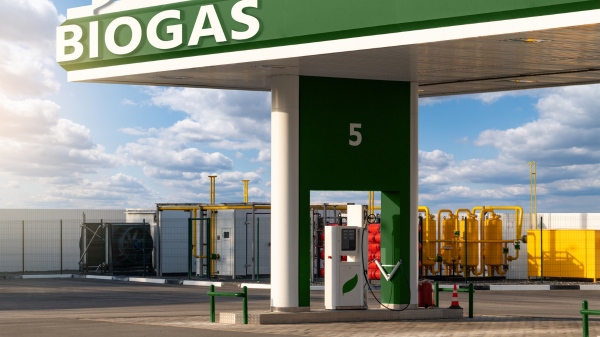
Biogas production is an important part of green energy solutions, as it provides a renewable source of energy that can be used for a variety of purposes. It’s produced by the anaerobic digestion of organic materials, such as cattle manure, and can be further purified to generate electricity or heat.
There are several technologies available for biogas utilization, including fuel cells, gas engines and boilers, which allow for efficient conversion of biogas into energy. In some cases, biogas can also be upgraded into biomethane, which can be used as an alternative to natural gas for a variety of purposes.
To maximize biogas production and utilization, it’s important to use the right biogas technologies, such as anaerobic digesters, biogas scrubbers, and membrane separation systems. By implementing these technologies, we can ensure that biogas is used as efficiently and effectively as possible, helping us to move towards a more sustainable future.
Biogas Production
Biogas production is an incredibly efficient and cost-effective green energy solution. Producing biogas involves the fermentation of organic matter, such as food waste or animal manure, in a closed system to create methane which can be used for heating and electricity generation. This process also reduces emissions by capturing pollutants that would otherwise escape into the atmosphere, making it a great way to reduce your carbon footprint.
The benefits of biogas don’t stop there – the leftover material from this process (known as digestate) can be used as a nutrient-rich fertilizer for crops and gardens. Not only does this help growers produce healthier harvests but it drastically cuts down on chemical use, reducing contamination of air and water sources.
Additionally, many countries are now offering incentives to encourage people to switch over to biogas systems – so you could benefit financially too!
With its wide range of advantages and minimal environmental impact, biogas production is one of the most reliable green energy solutions available today. So why not give it a try? It’s sure to bring major rewards both for you and our planet!
Biogas Utilization
Now that you know all the amazing benefits of biogas production, let’s talk about how it can be utilized.
One great way to use this green energy source is in cogeneration systems. These are combined heat and power (CHP) plants which generate electricity while also capturing and using the thermal energy produced during generation for heating purposes – making them incredibly efficient!
Not only does this significantly reduce costs but it also reduces emissions by up to 40%. Plus many countries provide incentives for installing these technologies, so why not take advantage?
Another popular utilization method is fuel cells – an emerging technology which converts chemical energy into electrical energy more efficiently than standard combustion processes. This makes them a viable alternative to traditional sources like fossil fuels, as they produce far less pollutants and result in fewer greenhouse gas emissions.
Nowadays, fuel cells powered with biogas are becoming increasingly common due to their affordability and reliability- making them another fantastic option if you’re looking to go green.
Biogas can even be used directly as well – such as replacing natural gas or propane in your home’s appliances. This helps save money on utility bills while reducing environmental impact at the same time.
It’s easy to see why biogas has become such a popular choice amongst those looking for affordable green solutions!
Biogas Technologies
Biogas solutions are becoming more popular as people become aware of their many benefits and potential applications. But what’s the best way to utilize this green energy source? Well, that depends on your needs – luckily there are lots of biogas technologies available!
From cogeneration systems to fuel cells, these advanced solutions have been designed with efficiency in mind so you can start taking advantage of biogas right away. Cogeneration systems combine heat and power generation while capturing and using thermal energy for heating purposes – saving money and reducing emissions at the same time.
Fuel cells convert chemical energy into electricity much more efficiently than combustion processes do, making them a great alternative to traditional sources like fossil fuels. And lastly, biogas can be used directly in appliances such as stoves or water heaters too – helping cut costs on utility bills without compromising on performance.
With so many options available, it’s easy to find the perfect fit for any green solution need. So why not give biogas technologies a try today?
Ocean Thermal Energy Conversion Solutions
OTEC has some great advantages – it’s a renewable energy source that has the potential to produce electricity for a fraction of the cost of other sources, and it doesn’t produce any pollutants.
However, it’s not all good news. There are some disadvantages to consider, like the costly set-up, the possible disruption of marine life, and the fact that it’s only available in certain locations.
Let’s dive in and explore the pros and cons of OTEC to get a better understanding of this green energy solution.
Advantages
When it comes to green energy solutions, Ocean Thermal Energy Conversion (OTEC) is a standout option. With OTEC technology, cold water from the depths of the ocean is brought up and used to produce electricity. This process results in plenty of advantages that make OTEC an attractive solution for countries looking to reduce their reliance on fossil fuels.
One major advantage of using OTEC systems is their high efficiency rate. By using deep-ocean temperatures as low as 4°C, these systems are able to generate power with higher efficiencies than other forms of renewable energy production, such as solar and wind power generation.
Furthermore, since this method relies on thermal gradients rather than intermittent resources like sunlight or wind, it can provide reliable baseload power throughout day and night cycles.
Another benefit of OTEC systems is their relatively low cost compared to alternative sources of green energy production. Since they rely mainly on natural ocean currents, many costs associated with traditional large-scale energy projects are eliminated; including costly excavation operations and infrastructure investments such as transmission lines.
In addition, unlike some renewable options – notably hydropower dams – there’s no need for costly land reclamation efforts when building an OTEC plant. All in all, this makes them one of the most economical ways to harness clean energy from our oceans!
Disadvantages
Despite the many advantages of OTEC systems, there are some drawbacks to using this technology.
Firstly, these plants require large amounts of water for their operation; meaning they must be built near deep-water ports or other coastal areas where large bodies of seawater can easily be accessed. This limits the places that an efficient OTEC facility can be constructed and may create resource competition in certain areas.
Additionally, due to the immense size of these power plants, it’s necessary to build them in relatively shallow waters – often less than 500 meters deep – which could negatively impact marine life if proper precautions aren’t taken during construction activities.
Moreover, while OTEC facilities produce virtually no air pollution themselves, their manufacturing process has been known to generate a significant amount of greenhouse gas emissions.
Finally, since ocean temperatures tend to vary greatly between different depths and locations around the world, not all regions are suitable for constructing highly efficient OTEC plants even with optimal conditions present onsite. As such, countries looking to harness renewable energy from our oceans should carefully consider the resources available before investing in an OTEC system.
Fuel Cells Solutions

Fuel cells are an emerging green energy solution that offer a variety of benefits.
There are several different types of fuel cells, ranging from hydrogen fuel cells to metal-air fuel cells.
Each type has its own unique advantages and drawbacks, making it important to consider what type of fuel cell is best for a particular application.
With their clean energy production, fuel cells offer environmental and economic benefits that are attractive to businesses and consumers alike.
Types Of Fuel Cells
Fuel cells are a revolutionary green energy solution that have the potential to revolutionize our world. They offer clean and efficient power, without producing any of the damaging emissions found in other forms of power generation.
There are many types of fuel cells available today, each with their own advantages and disadvantages. The most commonly seen type is the Proton Exchange Membrane (PEM) Fuel Cell, which converts hydrogen into electricity through an electrochemical reaction. PEMFCs are capable of powering vehicles up to five times more efficiently than batteries alone, making them ideal for use in electric cars or boats.
Another popular type is the Alkaline Fuel Cell (AFC), which uses potassium hydroxide as its electrolyte instead of hydrogen gas. AFCs can be used for large-scale applications such as stationary power plants, and they require less maintenance than other types of fuel cells.
Finally, Solid Oxide Fuel Cells (SOFCs) use ceramic materials as their electrolytes, allowing them to operate at very high temperatures and providing even higher efficiency levels compared to other fuel cell technologies. SOFCs have been proposed as a major source of renewable energy in buildings and industrial complexes worldwide due to their low operating costs and minimal environmental impact.
Benefits Of Fuel Cells
Fuel cells offer many benefits for green energy solutions, making them a great option for powering our world. They are incredibly efficient at converting hydrogen into electricity with minimal emissions, and they have the potential to be used in a variety of applications. Plus, their maintenance requirements are low compared to other types of power generation.
This makes them an attractive choice when it comes to transitioning away from fossil fuels.
PEMFCs can provide five times more efficiency than batteries alone, while AFCs are great for large-scale stationary plants due to their ease of use and maintainability. SOFCs also provide high efficiency levels but require very high temperatures to operate, so they’re best suited for buildings and industrial complexes that need long-term renewable energy sources.
All in all, fuel cells present a wide range of advantages over traditional power generation methods – from improved efficiency and reduced emissions to lower operating costs and longer lifespans – making them one of the go-to solutions for creating a greener future.
Nuclear Energy Solutions
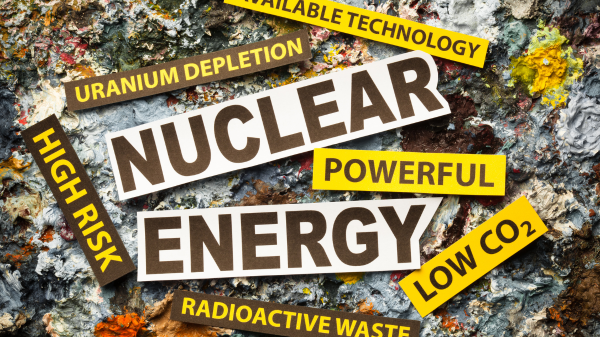
Nuclear power plants provide a safe and clean energy source, but there are still risks involved.
The disposal of nuclear waste is an important issue that needs to be addressed to ensure safe and sustainable energy production. We must develop safe and secure methods for storage and disposal of nuclear waste.
The benefits of nuclear energy are clear – it is a reliable and low-carbon energy source. It can also be used to create electricity in remote areas where other sources are unavailable.
Nuclear energy has great potential to supply the world with clean and efficient energy if we invest in better safety measures, improved waste disposal and efficient energy production. With the right investments, nuclear energy can be a powerful tool in fighting climate change and helping to create a greener future.
Nuclear Power Plant Safety
Nuclear power plants are one of the green energy solutions being used today. It’s an efficient, clean way to generate electricity, but it also comes with certain risks and safety concerns that must be addressed.
That’s why nuclear power plant operators have implemented a variety of measures designed to ensure proper maintenance, monitoring and safeguards against catastrophic events – all in place to help protect people living near these facilities and prevent widespread environmental damage.
The Nuclear Regulatory Commission (NRC) is responsible for setting and enforcing regulations related to the safe operation of nuclear power plants. These regulations cover everything from design requirements to emergency preparedness plans so that any potential issues can be managed quickly and effectively if they arise.
The NRC also conducts regular inspections of existing nuclear sites, ensuring that equipment and procedures remain up-to-date with industry standards.
There are additional measures underway at many locations around the world to further enhance safety such as replacing aging reactors with newer models or adding extra layers of protection like reinforced containment buildings or redundant cooling systems. All this adds another layer of assurance that should any incident occur, the consequences will be minimized as much as possible.
With these steps taken together, we can continue safely generating clean energy through nuclear power while helping preserve our planet’s resources for future generations.
Nuclear Waste Disposal
Though nuclear power is a clean and efficient way of generating electricity, the disposal of nuclear waste still needs to be addressed.
Nuclear waste can be incredibly hazardous if not managed properly and long-term storage solutions are needed in order to protect people and the environment from potential contamination.
The International Atomic Energy Agency (IAEA) has established regulations for the safe management and storage of spent fuel that must be followed by any organization dealing with radioactive material.
These guidelines provide an international standard for how this type of waste should be handled, stored and disposed of so that it does not pose a risk to human health or the environment.
Nuclear waste disposal is an important part of ensuring that we continue safely producing energy through nuclear power plants while protecting our planet’s resources for future generations.
We need to take action now to ensure sustainable practices are put into place so that these risks can be avoided.
Nuclear Energy Benefits
Nuclear energy is a clean and efficient way of generating electricity, which has the potential to help reduce our reliance on fossil fuels.
Not only does nuclear power plants produce fewer greenhouse gas emissions than traditional sources of energy, but it also produces consistent amounts of energy with no large fluctuations in output like solar or wind power can have.
Furthermore, while other renewable energies require vast tracts of land for their installations, nuclear reactors are able to operate within existing buildings and structures.
This allows us to harness the benefits of green energy without having to sacrifice prime real estate.
Finally, when responsible safety protocols are followed, nuclear energy generation provides an incredibly reliable source of clean electricity that can be produced day or night regardless of weather conditions.
Hydrogen Fuel Solutions
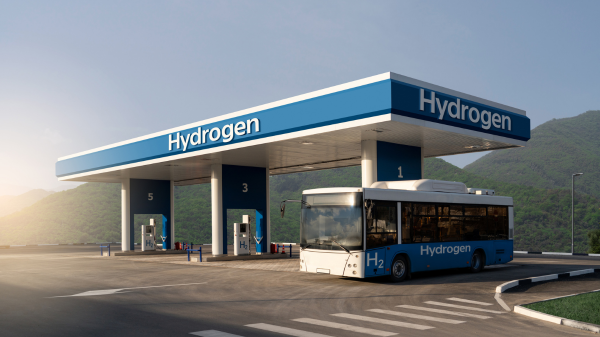
Hydrogen production is an essential part of making green energy solutions a reality. We need to explore ways to produce hydrogen efficiently and affordably.
On the other hand, hydrogen storage is also key to making green energy solutions practical. We need to find ways to safely and securely store the hydrogen we produce.
Hydrogen Production
We all know that the future of green energy solutions lies in hydrogen fuel. But how do we actually create this clean, renewable energy source?
Hydrogen production is a complex process with several options available to generate it.
The most common method for producing hydrogen involves reforming natural gas or other hydrocarbons such as coal and petroleum-based fuels. This process involves combining methane (CH4) with steam (H2O) at very high temperatures to produce hydrogen gas (H2). The resulting byproducts are carbon dioxide (CO2), which can be captured and stored, and water vapor (H2O). This type of hydrogen production is cost effective but produces emissions that contribute to climate change.
Another option for generating hydrogen fuel is through electrolysis, where electricity from solar, wind or nuclear sources splits water molecules into oxygen and pure hydrogen gas. This form of production requires more expensive initial capital costs than reforming fossil fuels but has zero emission potential making it an attractive alternative for those looking to reduce their carbon footprint.
Ultimately, both methods have pros and cons so deciding on the best solution depends on individual circumstances. With these two approaches in mind, let’s look at ways we can use this clean energy source to power our lives sustainably.
Hydrogen Storage
Now that we know how to create hydrogen fuel, the next step is finding a way to store it. Hydrogen storage requires special containers and infrastructure because of its low density and flammability.
There are several strategies for storing hydrogen gas including pressurized tanks, metal hydrides, and carbon nanotubes. Each option has pros and cons depending on factors like cost, safety, energy efficiency, and convenience.
Pressurized tanks remain the most common form of hydrogen storage but they require expensive materials such as steel or titanium due to their high pressure requirements. Metal hydrides offer an alternative solution with higher volumetric capacity than compressed tanks while also providing easy refueling capabilities. Finally, carbon nanotube technology provides a lightweight and efficient method of storing hydrogen in solid form which makes them attractive for transportation applications.
No matter which approach you choose, proper regulation must be put in place to ensure safe handling of this fuel source. With careful consideration given to these options, there’s no doubt that renewable energy solutions powered by clean hydrogen will continue to shape our future for years to come.
Fuel-Efficient Vehicle Solutions
Electric vehicles are becoming more and more popular, as they are more fuel-efficient and eco-friendly than traditional combustion engines; hybrids are also a great choice for those looking to reduce their carbon footprint, as they offer a combination of electric and combustion engine power.
Both EVs and hybrids are great solutions for reducing fuel consumption, as they can reduce our reliance on fossil fuels. Additionally, they provide a more sustainable option for drivers as they can help reduce emissions and save money.
Electric Vehicles
It’s undeniable that electric vehicles are becoming more and more popular in the green energy solutions space. They offer an attractive alternative to traditional fuel-driven cars, with their zero emissions capabilities and increased efficiency.
Not only do EVs provide a greener solution for our roads, but they also boast reduced maintenance costs and much lower running costs than petrol or diesel models – making them a great choice for those looking to cut their carbon footprint.
What’s even cooler is that EV charging technology has come on leaps and bounds over recent years – allowing drivers to plug into rapid chargers which can replenish batteries in as little as 30 minutes! Plus, many towns now have dedicated charge points dotted around, so you don’t need to worry about finding a parking spot close by when you’re out and about.
It’s no wonder why sales of electric cars surpassed 1 million units worldwide last year alone! In addition, governments across the globe are introducing incentives such as tax credits and subsidies designed to make the switch from combustion engine vehicles even easier; paving the way for a cleaner future.
With all these benefits combined, it’s clear that EVs are here to stay – ultimately providing us with an accessible option towards reducing our dependence on fossil fuels.
Hybrids
Hybrids are becoming increasingly popular as an alternative to electric vehicles. They offer a great combination of zero emissions and higher performance, making them the perfect choice for those who want to reduce their carbon footprint without sacrificing on power.
Hybrids like the Toyota Prius have become iconic symbols of fuel efficiency, while others such as the BMW i3 provide even better mileage due to their regenerative braking systems. And with hybrid technology continuing to evolve, more models are being released all the time – providing us with more options when it comes to getting from A to B in a sustainable fashion.
What’s really exciting about hybrids is that they can be charged up at home or at public charge points just like EVs – allowing you to refuel quickly when needed. Plus, many governments are introducing incentives such as tax credits and subsidies specifically aimed at encouraging drivers to switch over from combustion engine cars; helping make the transition easier and cheaper than ever before!
Clearly, hybrids have plenty going for them – offering an accessible solution that helps lower our impact on the environment while still giving us access to modern convenience. In short, this type of vehicle provides us with everything we need: reliable transport combined with eco-friendly credentials.
Energy Efficiency Solutions
We all want to make our homes more energy efficient, and one of the best ways to do this is by insulating them properly.
Insulation helps keep the heat in during the winter and out during the summer, saving energy and money.
Renewable energy sources like solar, wind, and hydro are also great options for increasing energy efficiency.
These sources are clean and non-polluting, and can provide long-term energy savings.
Finally, there are energy-saving devices like LED lightbulbs and smart thermostats that can help reduce energy consumption and save money.
By leveraging these devices, we can make our homes more energy efficient and help protect the environment.
Home Insulation
We can all feel the pinch of high energy bills, but there is something you can do to lower them.
Home insulation – one of the most effective green energy solutions available today – is a smart way to save money and reduce your home’s carbon footprint. With improved insulation, heat that’s generated by appliances or sunlight won’t escape through walls and ceilings, meaning less stress on cooling systems during hot summers and warming systems in cold winters. This saves time, effort and cash!
Upgrading your insulation will also increase comfort levels throughout the year; rooms are more comfortable when they don’t suffer from extreme temperature fluctuations due to inadequate or outdated material. Not only does this mean greater savings for you in terms of heating costs, it means far fewer drafts as well. Plus, good quality insulation increases soundproofing which can be great if you live close to busy roads or other loud areas.
So why wait? Investing in home insulation now could mean big savings down the line – not just on energy bills but also on repairs caused by moisture damage over time. Get started with improving the efficiency of your home today!
Renewable Energy Sources
Now that you know how home insulation can help lower your energy bills, let’s talk about renewable energy sources.
We all want to make sure we’re doing our part for the planet, and if we switch to green energy solutions like solar or wind power, it’ll do just that!
Solar panels are one of the most popular options these days – they convert the sun’s rays into electricity, so you don’t need to rely on conventional forms of power.
Wind turbines also use natural resources instead of fossil fuels; harnessing wind power provides a clean source of energy with no emissions or pollutants.
Both options take some time and money to set up but can save you tons in the long run as well as reducing your carbon footprint significantly.
So why not give them a try? You won’t regret it!
Plus, depending on where you live there may be government incentives available which will further sweeten the deal – what’s not to love?
All in all, investing in renewable energy sources is great way to reduce your environmental impact while still having access to reliable electricity.
Energy-Saving Devices
Now that you know about renewable energy sources, let’s turn our attention to something else – energy-saving devices.
These are a great way to cut down on your electricity bills and reduce your carbon footprint even further! You can find all sorts of gadgets available today like LED lightbulbs and smart thermostats which will help you save money while being kinder to the environment.
Not only do they require less power than traditional alternatives, but they also last much longer too – so it’s worth investing in them if you want to go green. Plus, some states offer tax credits for those who use these types of products, so there’s a financial incentive as well!
All in all, energy saving devices are another great option when it comes to making your home more efficient and reducing your environmental impact. It won’t take long before you start seeing results from using them – so why not give them a try?
Renewable Energy Credits Solutions
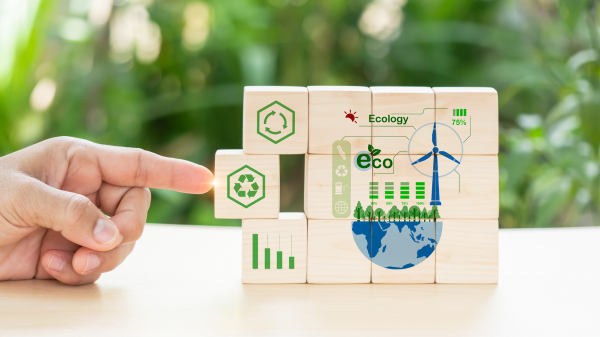
Let’s talk about Renewable Energy Credits and Renewable Energy Certificates solutions for green energy solutions.
RECs represent the environmental benefits of renewable energy, while RECs represent the financial benefits.
Both provide incentives to producers and consumers of renewable energy, so let’s look at how they work together to create a clean energy future.
Together, RECs and RECs provide a valuable, long-term solution for green energy.
Renewable Energy Credits
Renewable Energy Credits (RECs) are a great way to promote green energy solutions. They allow individuals, businesses and organizations to offset their carbon footprint by investing in renewable sources of electricity such as wind or solar power.
Instead of relying on non-renewable fossil fuels, they can invest in RECs that represent the environmental benefits associated with generating one megawatt hour of electricity from renewable sources. By doing so, they reduce emissions while still providing clean, reliable and affordable electricity for everyone.
The money generated through these RECs is used to fund new projects that further increase the availability of clean energy across the world. In addition, this revenue can be reinvested into research and development efforts aimed at improving existing technologies and creating even more efficient green energy solutions.
This helps ensure that renewable resources remain competitive against other forms of conventional electricity generation, making it easier for people to access low cost options without sacrificing quality or reliability.
In conclusion, Renewable Energy Credits offer an effective solution for transitioning towards sustainable energy production. Not only do they support investment in key areas like research and development but also provide additional economic incentives to encourage more widespread adoption of renewables – ultimately leading us closer to a greener future for all!
Renewable Energy Certificates
Renewable Energy Certificates (RECs) are another way to promote green energy solutions. They provide an additional economic incentive for those who wish to invest in renewable sources of electricity such as wind or solar power.
By purchasing a REC, individuals and organizations are able to receive credits that represent their contribution towards offsetting emissions while still providing access to clean, reliable and affordable electricity. This helps ensure that renewables remain competitive against other forms of conventional generation and encourages more widespread adoption.
The money generated through the sale of these certificates can also be reinvested into research and development efforts aimed at improving existing technologies and creating even more efficient green energy solutions – helping us move closer towards achieving our sustainability goals. Moreover, this revenue can also help fund new projects designed to further increase the availability of clean energy across the world.
Overall, Renewable Energy Certificates offer an effective solution for transitioning towards sustainable energy production; one which provides both environmental benefits and financial incentives for investing in renewable resources.
Unleash the potential of the DIY Home Energy System and prepare to be amazed as your electricity costs plummet by up to 75% or more within just 30 days! This accessible solution offers effortless energy independence, making it a must-have for anyone looking to cut expenses and protect their family’s future.
👇 Please Watch to See How It Works! 👇
Frequently Asked Questions
How Much Does It Cost To Set Up A Green Energy Solution?
Setting up a green energy solution can be both an affordable and rewarding venture.
Allusion to the wonders of renewable energy sources such as solar or wind lets us envision a brighter future; one that’s powered by clean, sustainable electricity.
The cost of implementing this kind of infrastructure varies depending on the size and scope of the project, but typically ranges from $5,000 – $20,000 for residential homes.
In addition to installation expenses, it’s important to factor in maintenance costs over time. Luckily with advances in technology, these have been steadily reduced while efficiency has increased.
Overall investing in green solutions is worth every penny if you’re looking for long-term savings!
What Are The Long-Term Benefits Of Using Green Energy Solutions?
Using green energy solutions can have a range of long-term benefits, from saving money on electricity bills to reducing your carbon footprint.
Not only are these solutions often cheaper in the long run since they use renewable sources of energy such as solar or wind power, but they also help you do your part for the environment.
By using renewable sources instead of non-renewables like oil and coal, you’re helping reduce air pollution and preserve natural resources.
Additionally, with government incentives available in many countries, going green can be an even better investment for the future.
Are Green Energy Solutions Available In All Countries?
Have you ever considered the availability of green energy solutions around the world?
With global warming increasingly taking a toll on our environment, it’s becoming more important than ever to look for alternative sources of energy.
But is this type of technology available in all countries? The answer may surprise you!
While some regions have already implemented green energy solutions, others are still lagging behind due to cost and infrastructure limitations.
However, with advancements in renewable energy technologies, we can expect that more countries will join the fight against climate change soon.
What Are The Environmental Impacts Of Green Energy Solutions?
Green energy solutions are becoming increasingly popular as an alternative to traditional sources of power.
But what kind of environmental impact do they have?
The answer depends on the type of green energy solution being used, but some potential impacts include reduced emissions from burning fossil fuels and less water pollution due to runoff from coal and nuclear plants.
Additionally, these solutions often involve renewable resources such as solar or wind which can help reduce our reliance on finite non-renewable energy sources.
Ultimately, deciding if green energy solutions are right for your home or business involves weighing both their environmental benefits against any negative implications that may exist.
How Quickly Can Green Energy Solutions Be Set Up?
When it comes to implementing innovative ways of conserving energy, the pace at which a green energy solution can be set up varies greatly.
From installing solar panels on rooftops to utilizing renewable resources such as wind or hydroelectricity, each project requires different timelines and processes depending on its scope and magnitude.
While some projects may require months or even years to complete, others are able to start generating power in a matter of weeks.
With new technology becoming increasingly efficient and cost-effective, more companies are turning towards green energy solutions that provide immediate returns with minimal effort.
Conclusion
In conclusion, green energy solutions are a great way to move towards a more sustainable future. They can help reduce our environmental impacts and provide long-term benefits for both people and the planet.
Setting up a green energy solution doesn’t have to be expensive or time consuming – in many cases, it’s relatively quick and simple. Plus, most countries now offer some form of green energy, so there is likely an option available no matter where you live.
As they say – every little bit counts! With small steps like this, we can make big strides towards creating a brighter tomorrow – one that shines with renewable energies from sunrise to sunset.
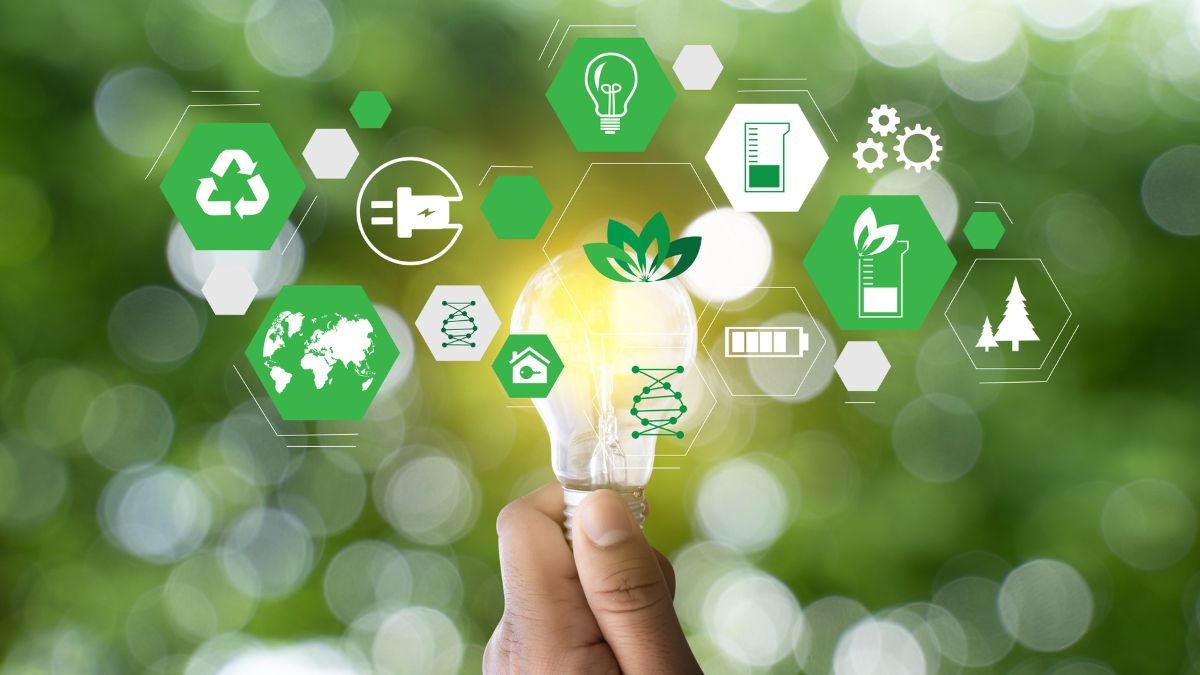
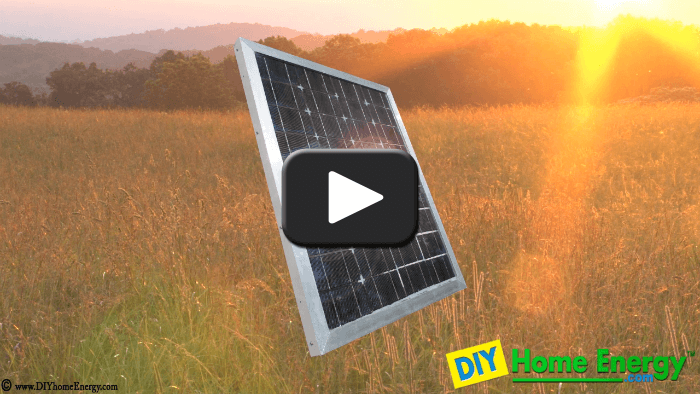
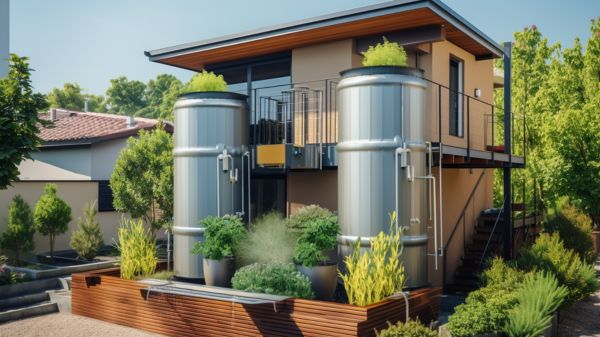




5 Comments
Comments are closed.